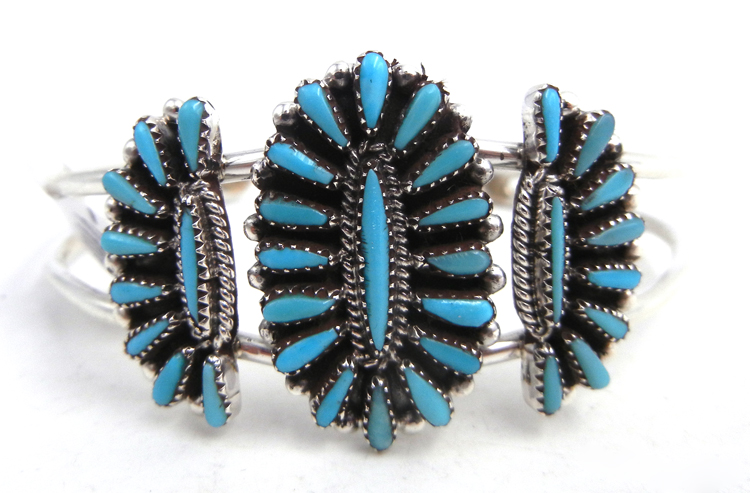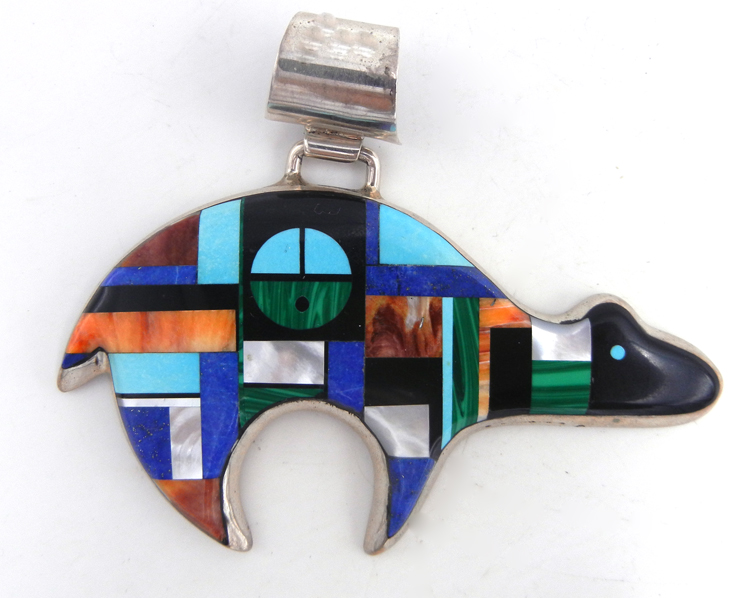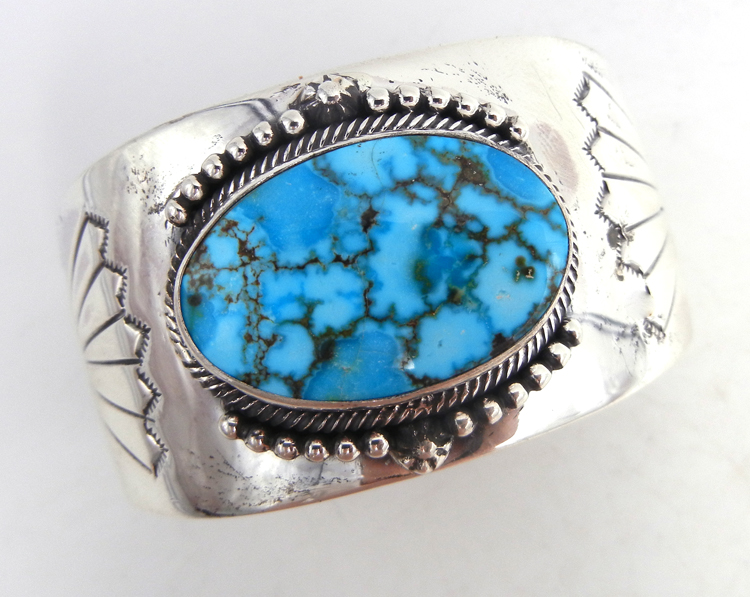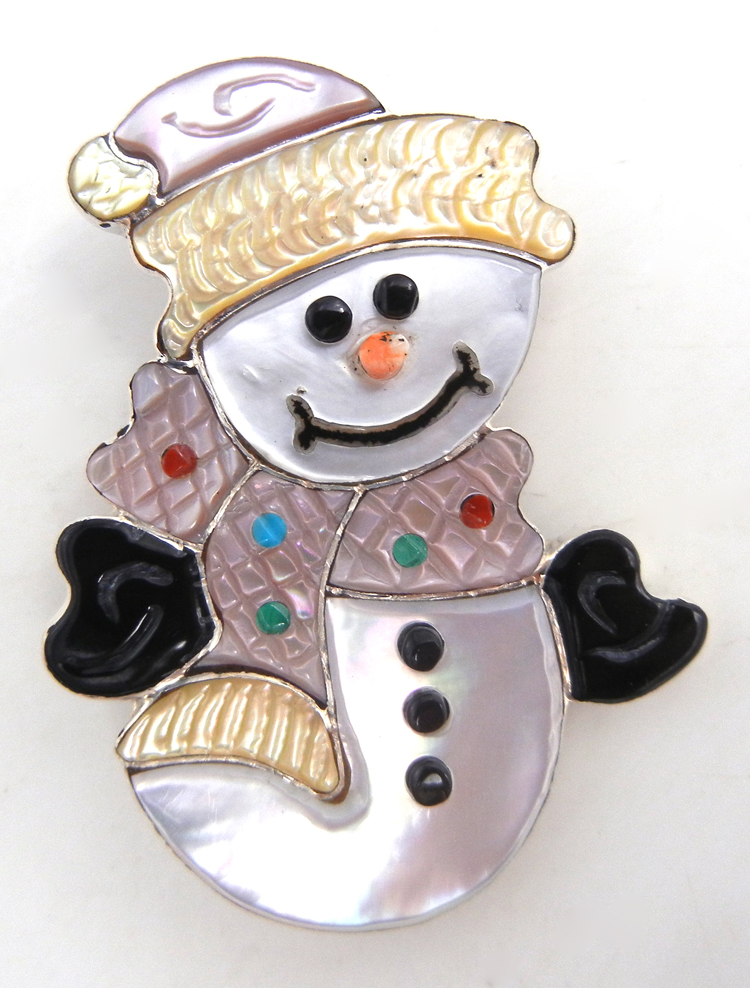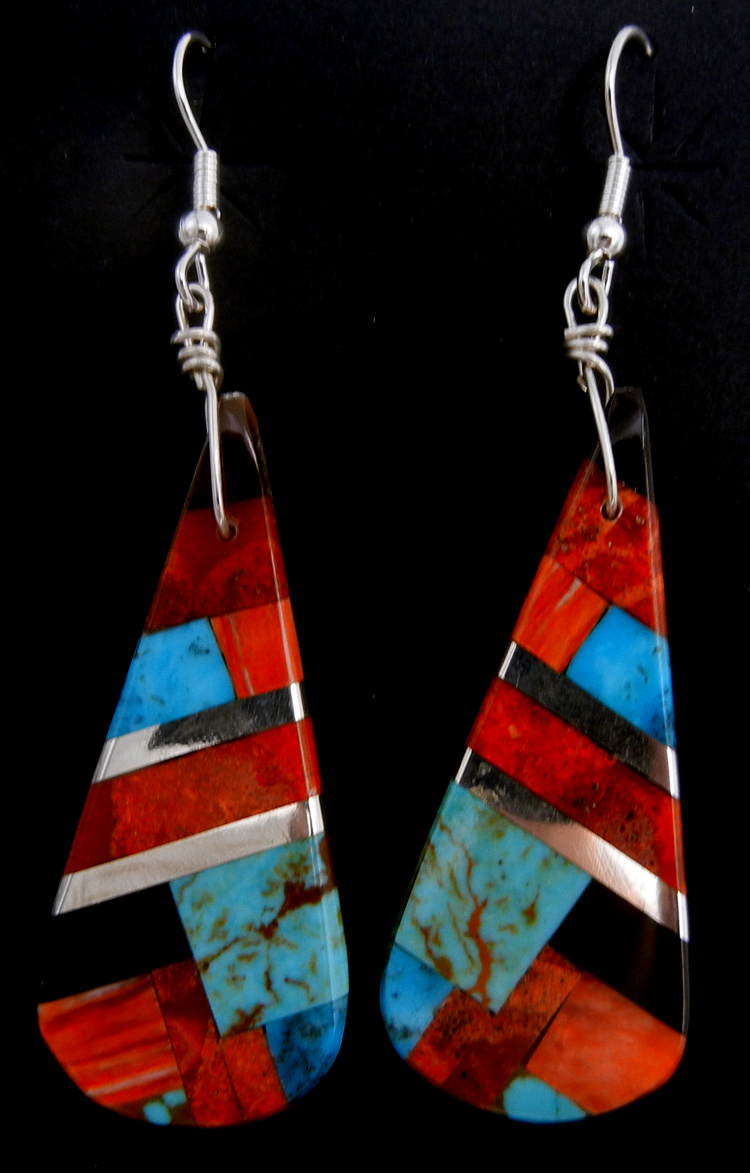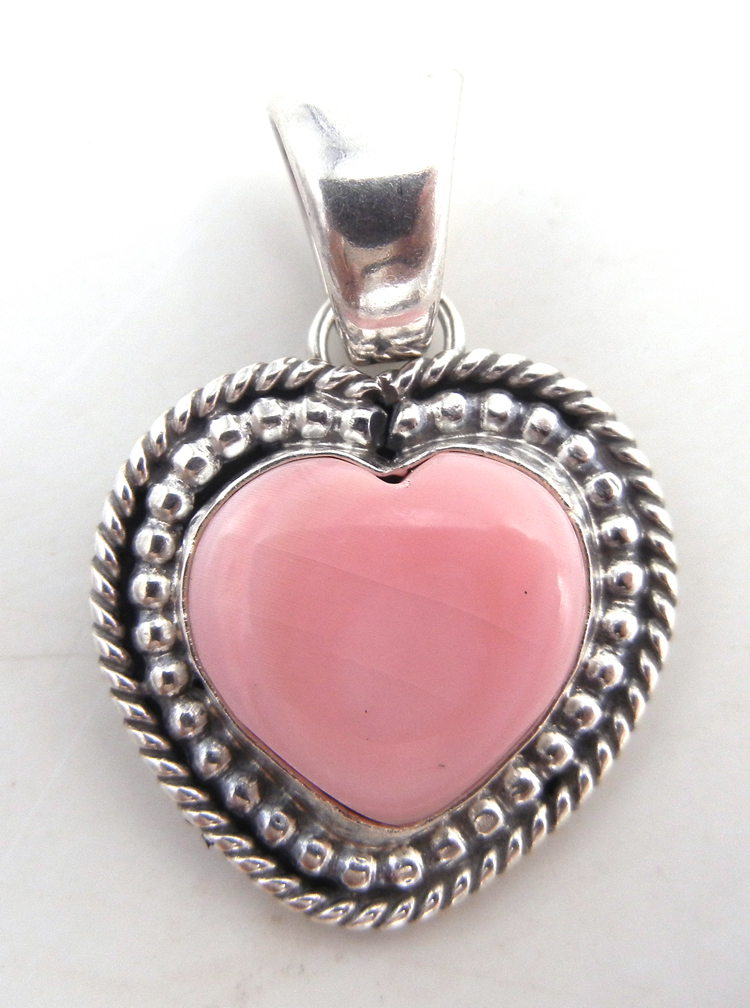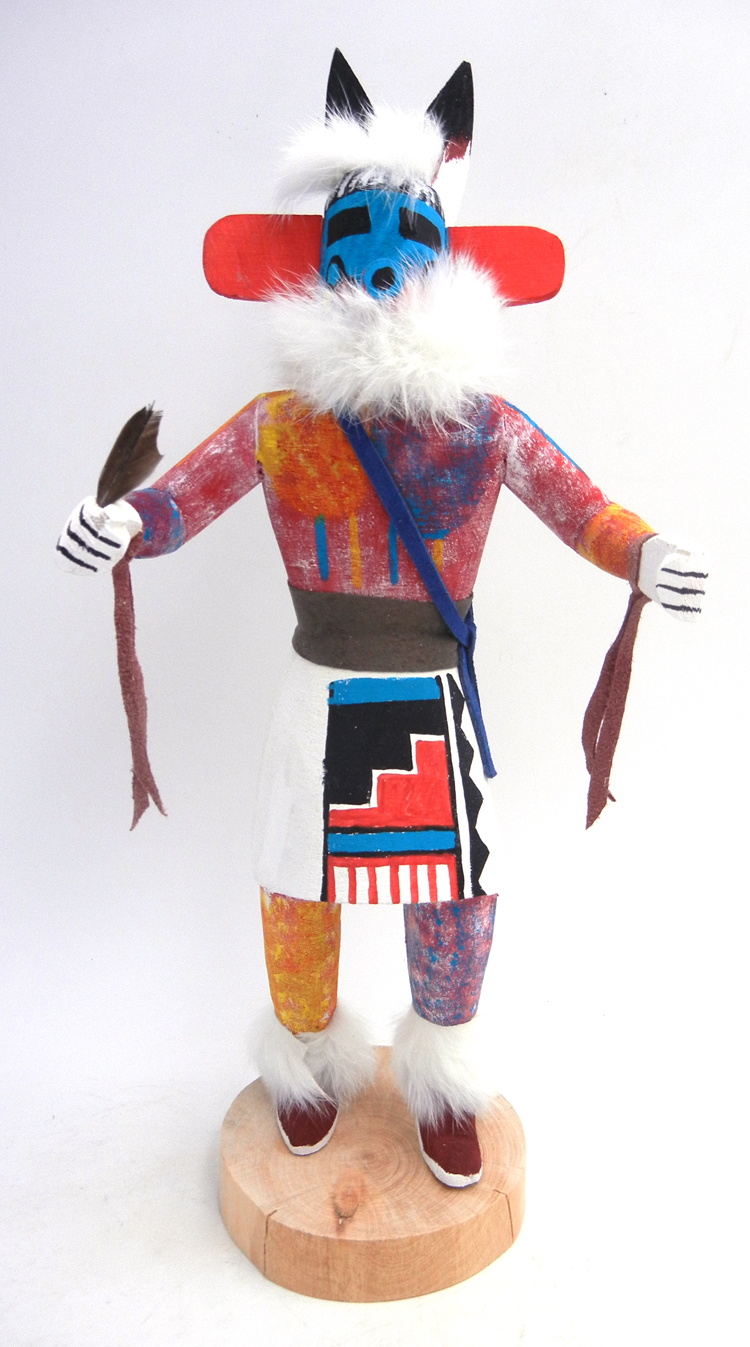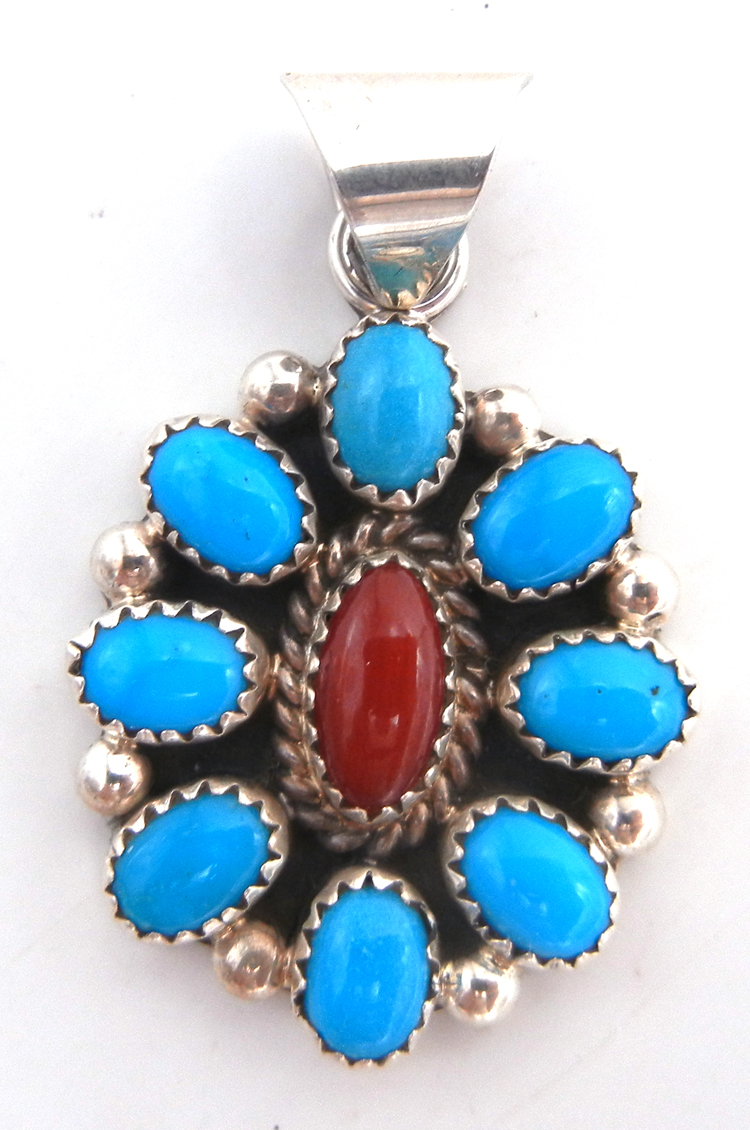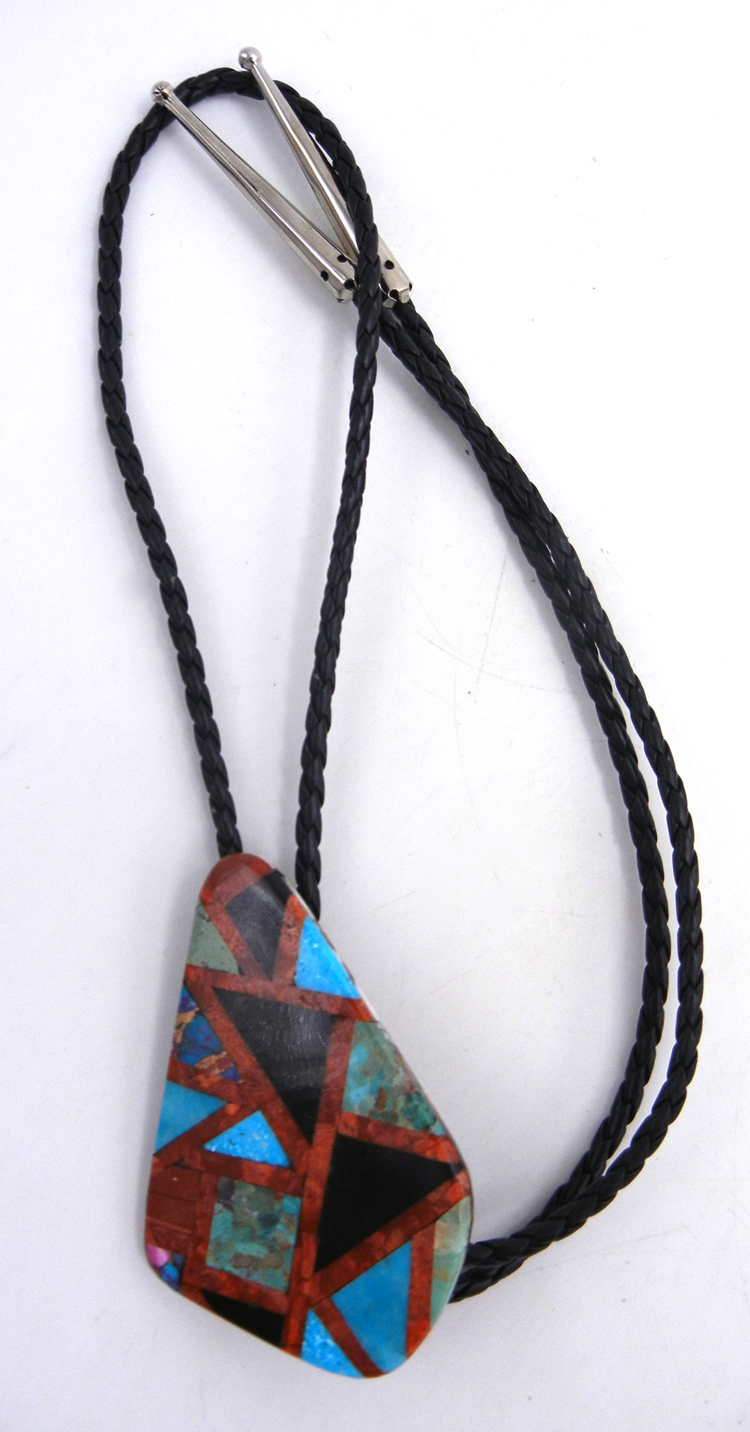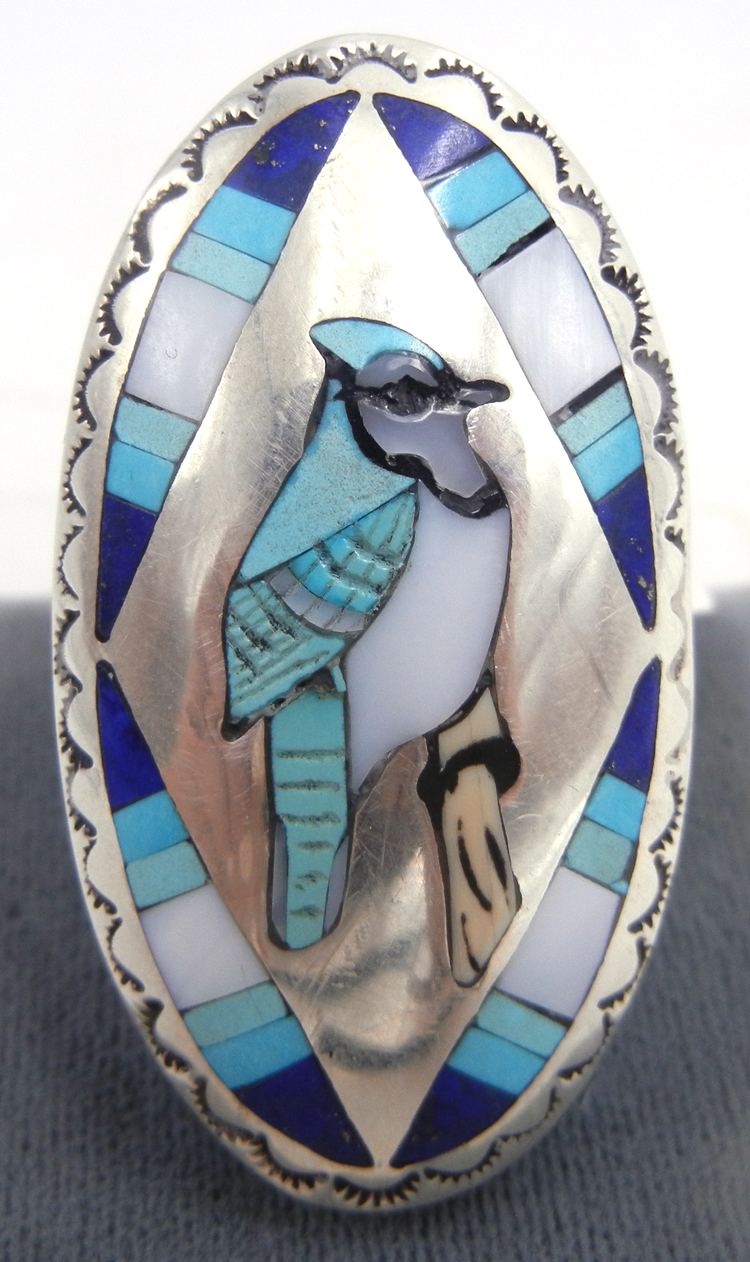View our Related Products
Turquoise is, undoubtedly, the most common stone used in Southwestern Native American jewelry. While the bright, sky-blue stones set in sterling silver are commonly seen in Zuni turquoise jewelry, turquoise naturally occurs in a variety of hues.
Handmade Native American Jewelry
Contact Palms Trading Company today at (505) 247-8504
The Unique Properties of Real Turquoise Jewelry
Chemically, turquoise is a hydrous phosphate of aluminum containing copper and iron. It is a porous stone and, as such, is not naturally very hard. It is opaque and characterized by a waxy luster.
The presence and amounts of various elements within turquoise composition dictate its color. Genuine turquoise may range from light blue to yellow-green. Some gemstones like White Buffalo and Wild Horse look like white turquoise, but chemically, they do not qualify as turquoise.
Blue and green turquoise is energetically associated with strength, wisdom, protection, and positive thinking.
Southwestern Turquoise Jewelry: Elegant Navajo and Zuni Designs
The two Native American nations most famous for their sterling silver and turquoise jewelry are the Navajo and Zuni.
Navajo turquoise jewelry often features large, chunky stones, showcasing the various color matrixes found in natural turquoise. Even in pieces using the classic sky blue turquoise color, you will still see the dark veins or color variations within the stone.
Zuni turquoise jewelry, on the other hand, typically uses Sleeping Beauty turquoise, which has a consistent, unblemished sky-blue color. Zuni turquoise needlepoint jewelry uses small slivers of turquoise stones arranged in intricate patterns, like the squash blossom. The absence of matrixes in the Sleeping Beauty stones helps to keep attention on the overall pattern and color scheme.
Understanding Turquoise Treatments and Classifications*
Because it is naturally a relatively soft stone (its hardness is comparable to window glass), turquoise is often treated to increase its durability for use in jewelry by Navajo and other Southwestern Native American artists. Treatments like lacquering that only affect the stone’s hardness result in “stabilized” turquoise.
However, some treatments also affect the color of turquoise. Treatments that apply dyes in addition to processes to improve hardness result in turquoise that is classified as “treated.”
Still, other processes compress turquoise nuggets or powders into a solid stone. Depending on the size of the turquoise particles at the start of the process, stones resulting from this process may be classified as “reconstituted” or “imitation.”
*Turquoise classifications are delineated in the 1973 New Mexico Indian Arts and Crafts Act.
It is essential to understand the types and results of various treatments when purchasing Native American turquoise jewelry. Merchants may not always tell you how a stone has been treated, which means the stone could be fake, or the treatment effects may likely degrade quickly.




